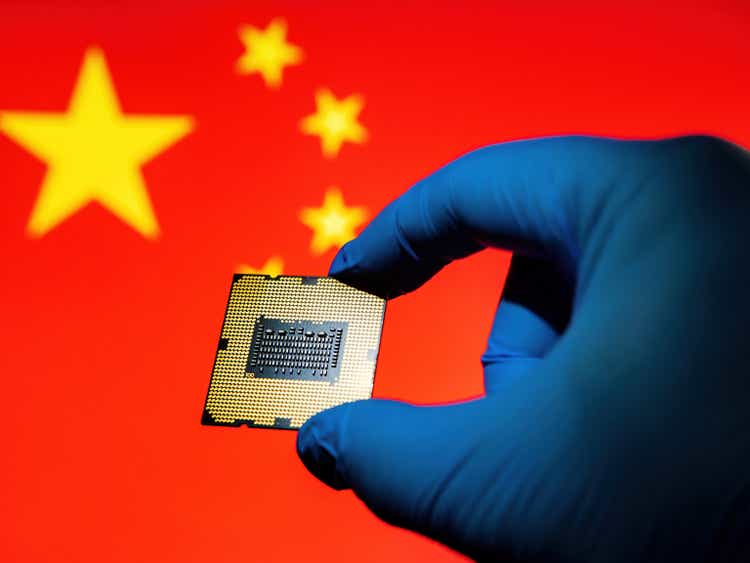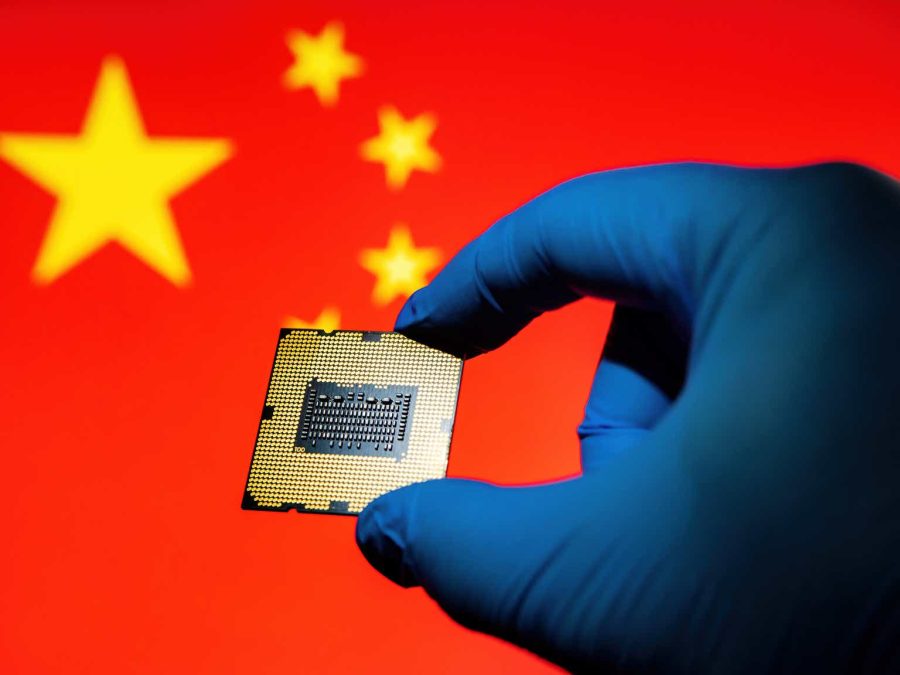Summary:
- RISC-V architecture is gaining traction in China as a geopolitically neutral alternative to x86 and ARM architectures dominated by the U.S.
- The rise of RISC-V presents a potential risk to Advanced Micro Devices, Inc.’s market share in China, as domestic chipmakers could design and manufacture RISC-V based processors.
- AMD’s current advantages include the performance gap between x86 and RISC-V, the established x86 ecosystem, and its existing brand presence in China.
webclipmaker
Preamble
Anyone who has been investing for any length of time will be aware of Warren Buffett’s ageless principles. Near the top of the list is; “Our favorite holding period is forever,” which explains why companies that sell fizzy drinks, burgers, and insurance are among Berkshire’s key holdings. I guess Mr Buffett figures that people will be swigging sugary beverages and chowing down on burgers while life remains on planet earth.
This principle also goes some way to explain why Berkshire holds precious few technology stocks, given that holding forever is often unwise for companies that operate in the tech sector. There are numerous examples of high-flying tech stocks that were once darlings of the market, but then came crashing back down to earth. Take the recent example of Snapchat of Snap Inc. (SNAP), which was at one time hugely popular. However, similar features to Snapchat’s application have been adopted by major social media platforms like Instagram, leading to a decline in Snapchat’s user base and stock price.
The tech sector is a land of wild swings to the upside that typically push valuations beyond ridiculous. Then, prices can turn south at a scary pace for reasons that often escape investors. While some of these dips might seem to present buying opportunities, there are falls that signal deeper structural shifts. These long-term trends can reshape entire industries, leaving investor portfolios in ruins.
To navigate the treacherous waters of tech investing, a keen eye for long-term trends is more than crucial. The focus of this article is a trend that could seriously impact the revenues of Advanced Micro Devices, Inc. (NASDAQ:AMD), which is the emergence of the use of RISC-V architecture, particularly in China.
I recently penned an article highlighting ominous signs for chip manufactures, which focused on Intel (INTC), but the points raised are equally valid for AMD.
RISC-V
The RISC-V architecture is an open-source instruction set architecture (“ISA”) that has gained significant traction in recent years. RISC-V was developed at the University of California as a research project in 2010, with the goal of creating an open and flexible ISA that addresses the limitations of proprietary ISAs and promotes innovation. As of today, anyone can download the software for free.
The RISC-V architecture is based on the principles of Reduced Instruction Set Computing (RISC), which emphasizes simplicity, efficiency, and a small set of general-purpose instructions. This approach contrasts with the Complex Instruction Set Computing (CISC) architecture, which employs a larger set of more complex instructions. RISC-V’s design principles, including modularity and extensibility, allow for customization and the addition of specialized instruction extensions without affecting existing functionality.
One of the key advantages of RISC-V is its open and royalty-free nature, which encourages collaboration and innovation across academia, industry, and the developer community. Additionally, its modular and extensible design enables customization for specific applications, optimizing power efficiency and performance. However, the RISC-V ecosystem is still developing, with potential challenges in terms of software availability, compatibility, and hardware maturity compared to established ISAs like x86 and ARM.
RISC-V finds applications in various domains, including Internet of Things devices, embedded systems, high-performance computing, automotive systems, machine learning accelerators, and networking infrastructure.
RISC-V On The Rise In China
As the U.S. tightens restrictions on China’s access to cutting-edge chips and chipmaking equipment, Beijing is turning to RISC-V as a geopolitically neutral alternative to the proprietary x86 and ARM architectures, which are dominated by the US and other Western companies.
Reuters reported that Chinese state entities, research institutes, and companies have invested at least $50 million in RISC-V projects between 2018 and 2023, with recent breakthroughs and applications emerging in areas such as self-driving cars, artificial intelligence, and data storage centers. However, I would suggest that a figure much higher than $50 million is plausibly more accurate, since a window into state-sponsored investments is not publicly available.
There is a growing maturity of the RISC-V ecosystem in China, with the country accounting for an estimated half of the over 10 billion RISC-V chips shipped globally in 2022. Chinese tech giants like Alibaba and Huawei have been among the largest filers of RISC-V patents, underscoring the strategic importance of this technology for China’s semiconductor ambitions. In fact, in 2021, China reportedly accounted for 1061 out of the global total of 2508 RISC-V patents filed internationally.
While RISC-V’s market share remains modest at the moment compared to x86 and ARM, China’s commitment to this open-source standard highlights its determination to achieve technological self-sufficiency and insulate itself from the impact of U.S. export controls on advanced semiconductor technologies.
Chinese Chip Companies
For those who wish to delve deeper into the hurdles soon to be faced in earnest by U.S. chip companies resulting from Chinese competition, I refer you to my recent article on Intel. However, to underscore the headwinds going forward, according to a recent New York Times article:
“More than 100 ‘significant’ Chinese companies are designing chips with RISC-V today, as are at least 100 more start-ups, said Handel Jones, an analyst at International Business Strategies. Many of the applications are in fairly mundane consumer products, but engineers believe the technology will eventually take over some of the most demanding tasks.”
RISC-V Is A Potential Achilles’ Heel For AMD
AMD has carved a strong position as a major player in the x86 chip architecture market, particularly challenging Intel’s dominance. However, the rise of RISC-V presents a potential risk, especially in the Chinese market.
Reduced Reliance on Foreign Technology: China has long strived for technological independence, and RISC-V offers an alternative to x86, which is currently controlled by American companies. Widespread adoption of RISC-V in China could decrease AMD’s market share, as domestic chipmakers could design and manufacture RISC-V based processors without relying on foreign technology.
Cost Advantages: RISC-V’s open-source nature eliminates licensing fees associated with x86. This cost advantage could be particularly appealing to Chinese manufacturers looking for cost-effective solutions. Additionally, RISC-V’s simpler design potentially allows for lower production costs compared to x86 chips.
Government Support: The Chinese government has actively promoted RISC-V development, with significant investments in research and development. This strong government backing could accelerate RISC-V adoption in China, further marginalizing x86 processors.
In addition, China has recently introduced guidelines aimed at phasing out U.S. microprocessors from government computers and servers, as described by Reuters on March 24. The move extends to processors from tech giants such as AMD. Furthermore, Government agencies are now required to prioritize “safe and reliable” processors and operating systems in their procurement processes, favoring domestic options.
In a bid to ensure the transition, China’s industry ministry issued a statement in late December listing CPUs, operating systems, and centralized databases deemed “safe and reliable” for the next three years, all sourced from Chinese companies.
As geopolitical tensions continue to shape the tech industry, China’s move underscores its determination to assert greater autonomy in critical technological domains, setting the stage for potential shifts in global supply chains.
Mitigating factors for AMD
Whilst the above does describe a rather gloomy outlook, there are ways in which AMD could continue to prosper in China.
Performance Gap: Currently, x86 chips generally outperform RISC-V in terms of raw processing power, particularly relevant for high-performance computing applications. While RISC-V is rapidly evolving, it might take time to catch up.
Ecosystem Maturity: The x86 ecosystem is well-established, with a vast library of software and hardware components optimized for the architecture. Building a comparable ecosystem for RISC-V will require significant time and investment.
AMD’s Existing Presence: AMD has already established a strong brand presence in China. They can leverage this to their advantage, focusing on the performance benefits of x86 for specific market segments.
Summary
Overall, the widespread adoption of RISC-V in China poses a potential long-term threat to AMD. However, the current performance gap, established ecosystem, and existing market presence offer AMD some breathing room. To mitigate the risk, AMD may need to consider strategies such as actively participating in the RISC-V ecosystem or developing some kind of hybrid x86-RISC-V processors to cater to specific market needs.
Analyst’s Disclosure: I/we have no stock, option or similar derivative position in any of the companies mentioned, and no plans to initiate any such positions within the next 72 hours. I wrote this article myself, and it expresses my own opinions. I am not receiving compensation for it (other than from Seeking Alpha). I have no business relationship with any company whose stock is mentioned in this article.
Seeking Alpha’s Disclosure: Past performance is no guarantee of future results. No recommendation or advice is being given as to whether any investment is suitable for a particular investor. Any views or opinions expressed above may not reflect those of Seeking Alpha as a whole. Seeking Alpha is not a licensed securities dealer, broker or US investment adviser or investment bank. Our analysts are third party authors that include both professional investors and individual investors who may not be licensed or certified by any institute or regulatory body.
